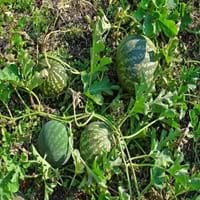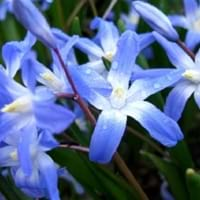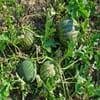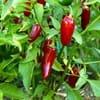Life Span
Annual
Perennial
Type
Vegetable
Bulb or Corm or Tuber
Origin
Hybrid origin, Africa, Southern Africa
Mediterranean, Turkey
Types
Not Available
Pale glory-of-the-snow , Cretan glory-of-the-snow , Forbes' glory-of-the-snow , Loch's glory-of-the-snow
Number of Varieties
Not Available
Habitat
along watercourse, Grassland
Mediterranean region
USDA Hardiness Zone
10-12
3-9
Sunset Zone
A3, H1, H2, 1a, 1b, 2a, 2b, 3a, 3b, 4, 5, 6, 7, 8, 9, 10, 11, 12, 13, 14, 15, 16, 17, 18, 19, 20, 21, 22, 23, 24
21,22
Habit
Prostrate/Trailing
Clump-Forming
Flower Color
Yellow
White, Blue, Pink, Violet
Flower Color Modifier
Bicolor
Bicolor
Fruit Color
Green, Crimson, Dark Green
Not Available
Leaf Color in Spring
Light Green
Green
Leaf Color in Summer
Green, Gray Green
Light Green
Leaf Color in Fall
Green, Gray Green
Several shades of Green
Leaf Color in Winter
Not Available
Light Green
Leaf Shape
Irregular
Long Linear
Plant Season
Summer, Fall
Spring, Winter
Sunlight
Full Sun
Full Sun, Partial Sun
Growth Rate
Very Fast
Medium
The pH of Soil
Neutral
Acidic, Neutral, Alkaline
Soil Drainage
Well drained
Well drained
Bloom Time
Indeterminate
Early Spring, Late Winter
Tolerances
Drought
Drought
Where to Plant?
Container, Ground
Ground, Pot
How to Plant?
Seedlings, Transplanting
Divison, Seedlings
Plant Maintenance
High
Medium
Watering Requirements
Requires consistently moist soil, Requires regular watering, Requires watering in the growing season, Water Deeply
Medium
In Summer
Lots of watering
Lots of watering
In Spring
Moderate
Moderate
In Winter
Average Water
Average Water
Soil pH
Neutral
Acidic, Neutral, Alkaline
Soil Drainage Capacity
Well drained
Well drained
Sun Exposure
Full Sun
Full Sun, Partial Sun
Pruning
Remove damaged leaves, Remove dead leaves, Remove dead or diseased plant parts
Remove damaged leaves, Remove dead branches, Remove dead leaves
Fertilizers
fertilize in growing season, Nitrogen, Potassium
All-Purpose Liquid Fertilizer
Pests and Diseases
brown-spot needle blight, Cutworms, Downy mildew, Flea beetle, Flea Beetles, Fungal Diseases, fungus, Fusarium wilt, Powdery mildew, Red blotch
Pests and diseases free
Plant Tolerance
Drought, Salt
Deer resistant, Drought
Flower Petal Number
Single
Single
Foliage Texture
Coarse
Fine
Foliage Sheen
Matte
Matte
Attracts
Bees, Insects, Squirrels
Butterflies
Allergy
Stomach pain, Throat itching
Unknown
Aesthetic Uses
Ground Cover
along a porch, deck or patio, Cottage Garden, Mixed Border, Showy Purposes
Beauty Benefits
Not Available
Not Available
Environmental Uses
Air purification, Food for animals, Food for birds, Food for insects, Versatility
Air purification
Medicinal Uses
High blood pressure, Nutrients
Unknown
Part of Plant Used
Fruits
Not Available
Other Uses
Used As Food, Used for its medicinal properties, Used in making beverages
Unknown
Used As Indoor Plant
No
No
Used As Outdoor Plant
Yes
Yes
Garden Design
Edible, Fruit / Fruit Tree, Herb / Vegetable, Tropical, Vine
Alpine, Container, Foundation, Lawns and Turf, Mixed Border, Rock Garden / Wall, Wildflower
Botanical Name
CITRULLUS lanatus 'Crimson Sweet'
CHIONODOXA
Common Name
Crimson Sweet Watermelon, Watermelon
Chionodoxa, Glory-of-the-Snow
In Hindi
तरबूज़
Chionodoxa
In German
Wassermelone
Ruhm des Schnees
In French
Citrullus lanatus
gloire de la neige
In Spanish
Citrullus lanatus
gloria de la nieve
In Greek
καρπούζι
glory-of-the-snow
In Portuguese
Citrullus lanatus
glória da neve
In Polish
Citrullus lanatus
chwała śniegu
In Latin
Citrullus lanatus
glory of the snow
Phylum
Embryophyta
Vascular plant
Class
Magnoliopsida
Liliopsida
Order
Cucurbitales
Asparagales
Family
Cucurbitaceae
Liliaceae
Genus
Citrullus
Chionodoxa
Clade
Angiosperms, Eudicots, Rosids
Angiosperms, Monocots
Tribe
Benincaseae
Not Available
Subfamily
Cucurbitoideae
Scilloideae
Number of Species
Not Available
Season and Care of Citrullus Lanatus and Glory of the Snow
Season and care of Citrullus Lanatus and Glory of the Snow is important to know. While considering everything about Citrullus Lanatus and Glory of the Snow Care, growing season is an essential factor. Citrullus Lanatus season is Summer and Fall and Glory of the Snow season is Summer and Fall. The type of soil for Citrullus Lanatus is Loam and for Glory of the Snow is Loam while the PH of soil for Citrullus Lanatus is Neutral and for Glory of the Snow is Acidic, Neutral, Alkaline.
Citrullus Lanatus and Glory of the Snow Physical Information
Citrullus Lanatus and Glory of the Snow physical information is very important for comparison. Citrullus Lanatus height is 15.20 cm and width 240.00 cm whereas Glory of the Snow height is 10.20 cm and width 5.10 cm. The color specification of Citrullus Lanatus and Glory of the Snow are as follows:
Citrullus Lanatus flower color: Yellow
Citrullus Lanatus leaf color: Light Green
Glory of the Snow flower color: White, Blue, Pink and Violet
- Glory of the Snow leaf color: Green
Care of Citrullus Lanatus and Glory of the Snow
Care of Citrullus Lanatus and Glory of the Snow include pruning, fertilizers, watering etc. Citrullus Lanatus pruning is done Remove damaged leaves, Remove dead leaves and Remove dead or diseased plant parts and Glory of the Snow pruning is done Remove damaged leaves, Remove dead branches and Remove dead leaves. In summer Citrullus Lanatus needs Lots of watering and in winter, it needs Average Water. Whereas, in summer Glory of the Snow needs Lots of watering and in winter, it needs Average Water.





